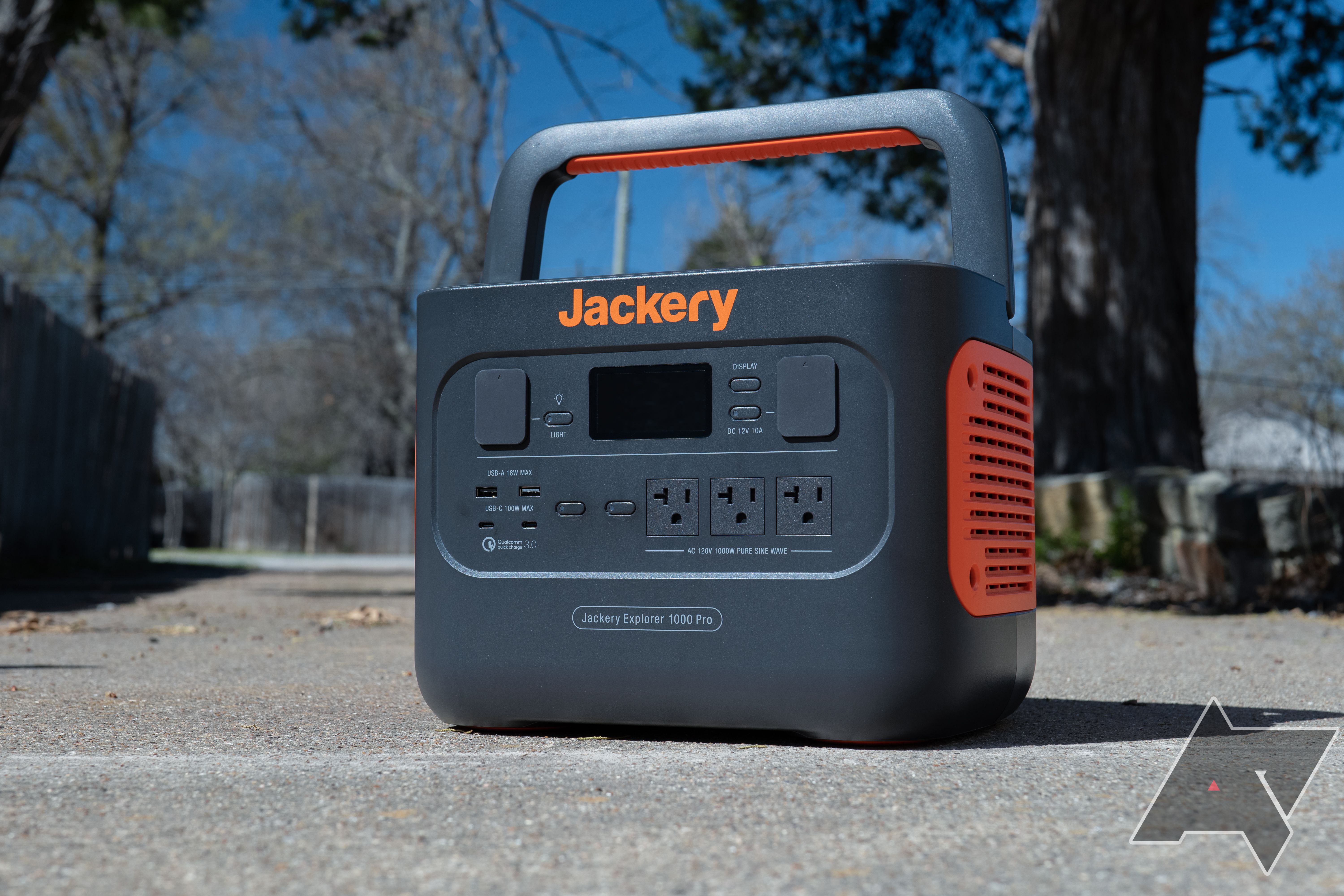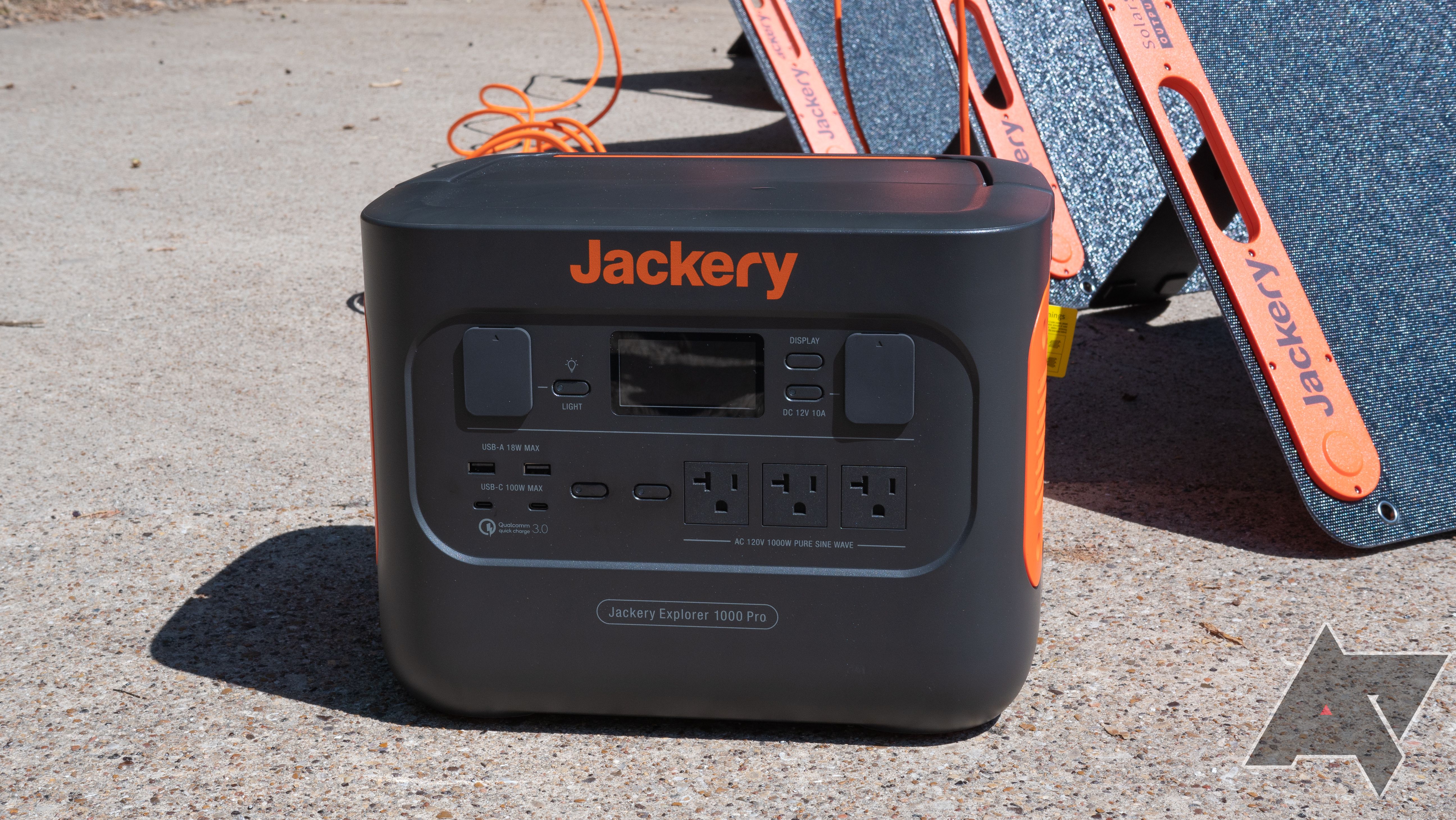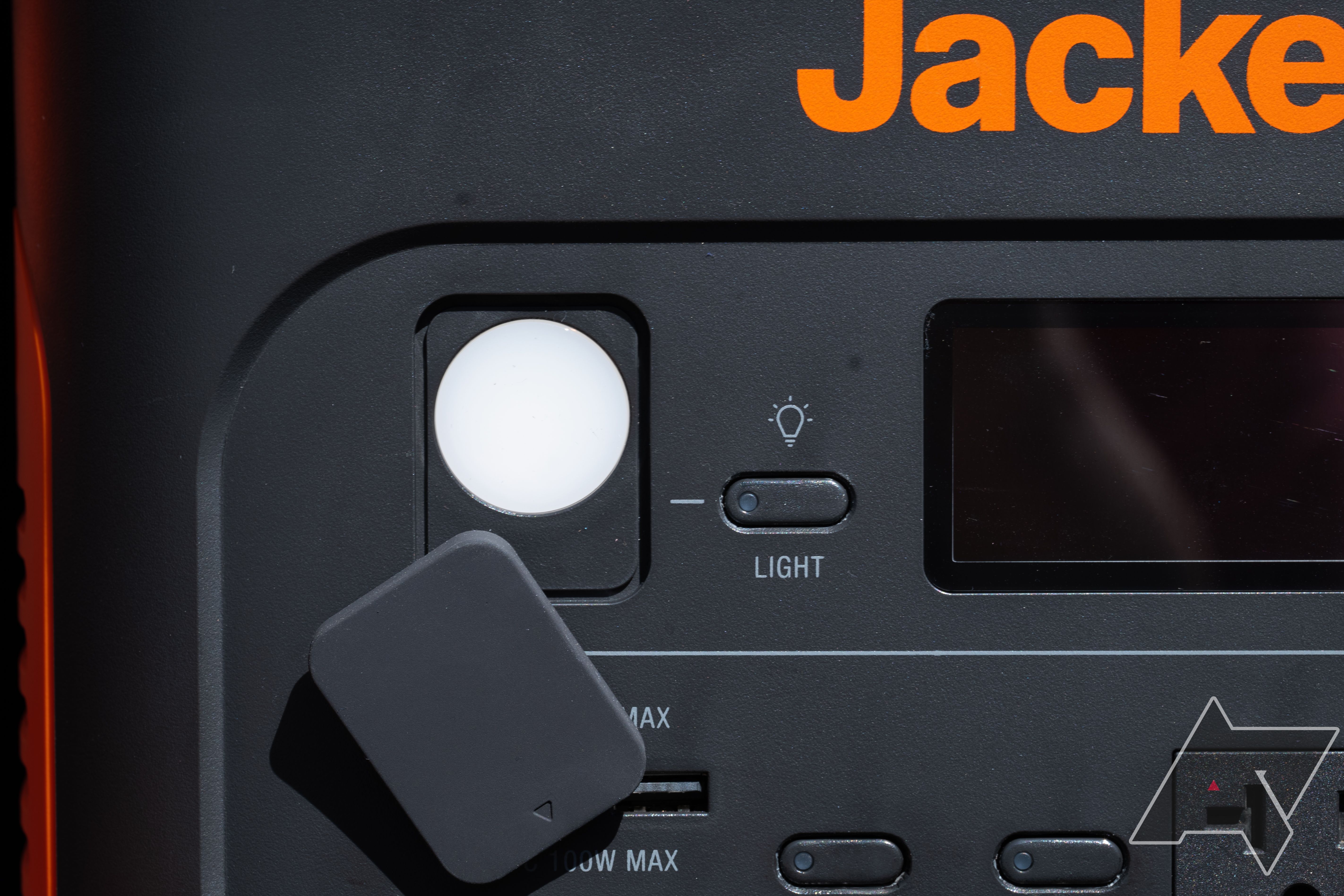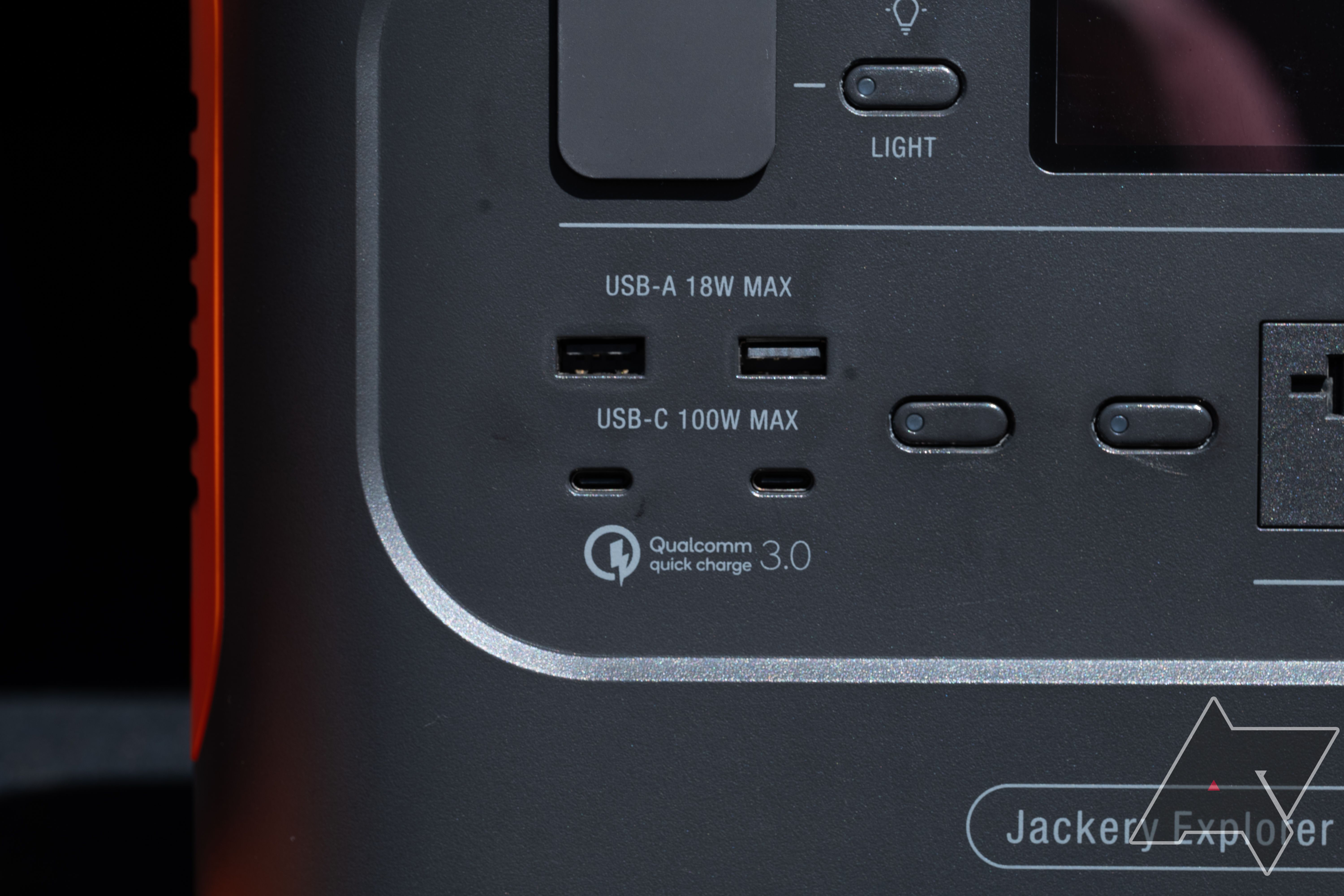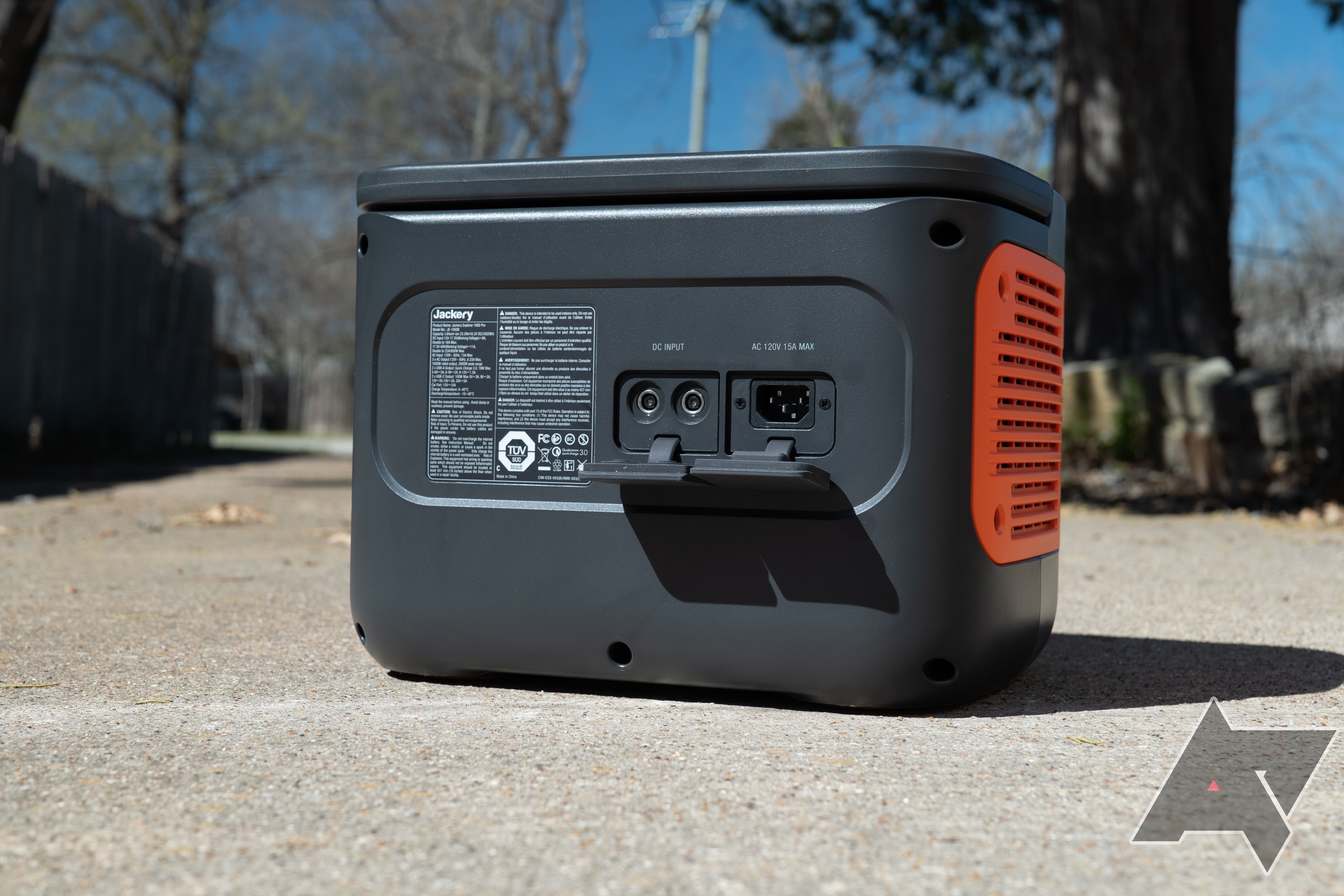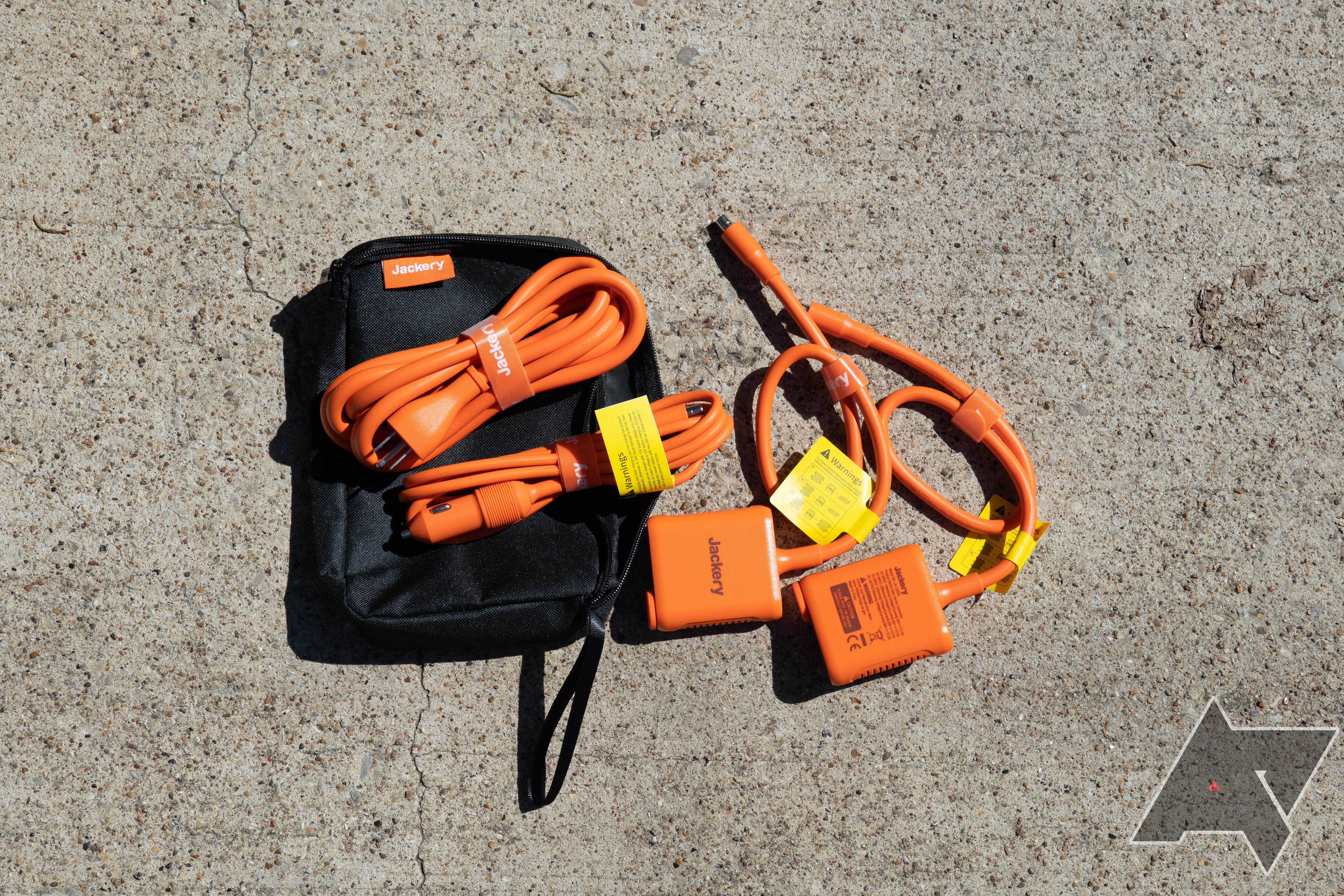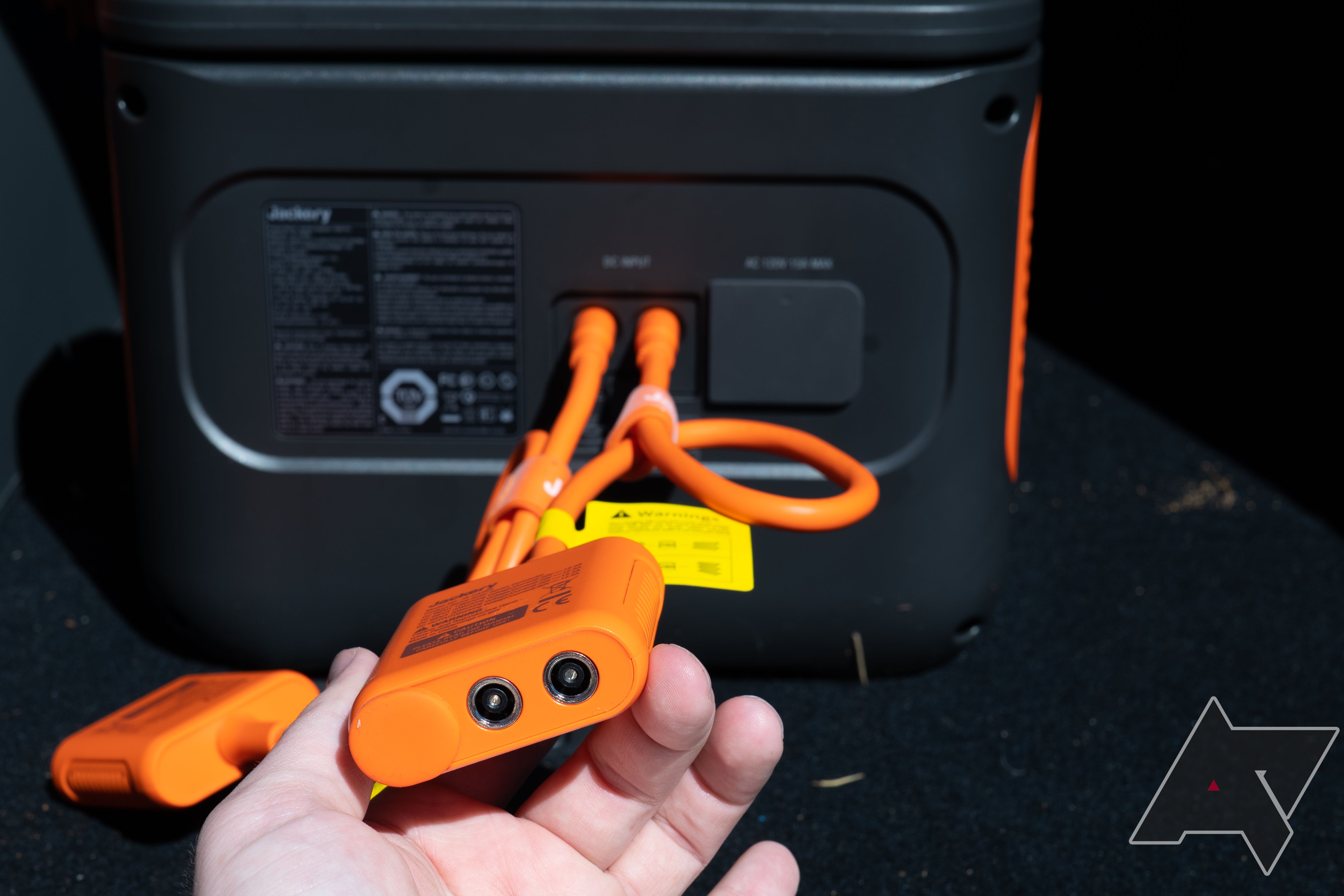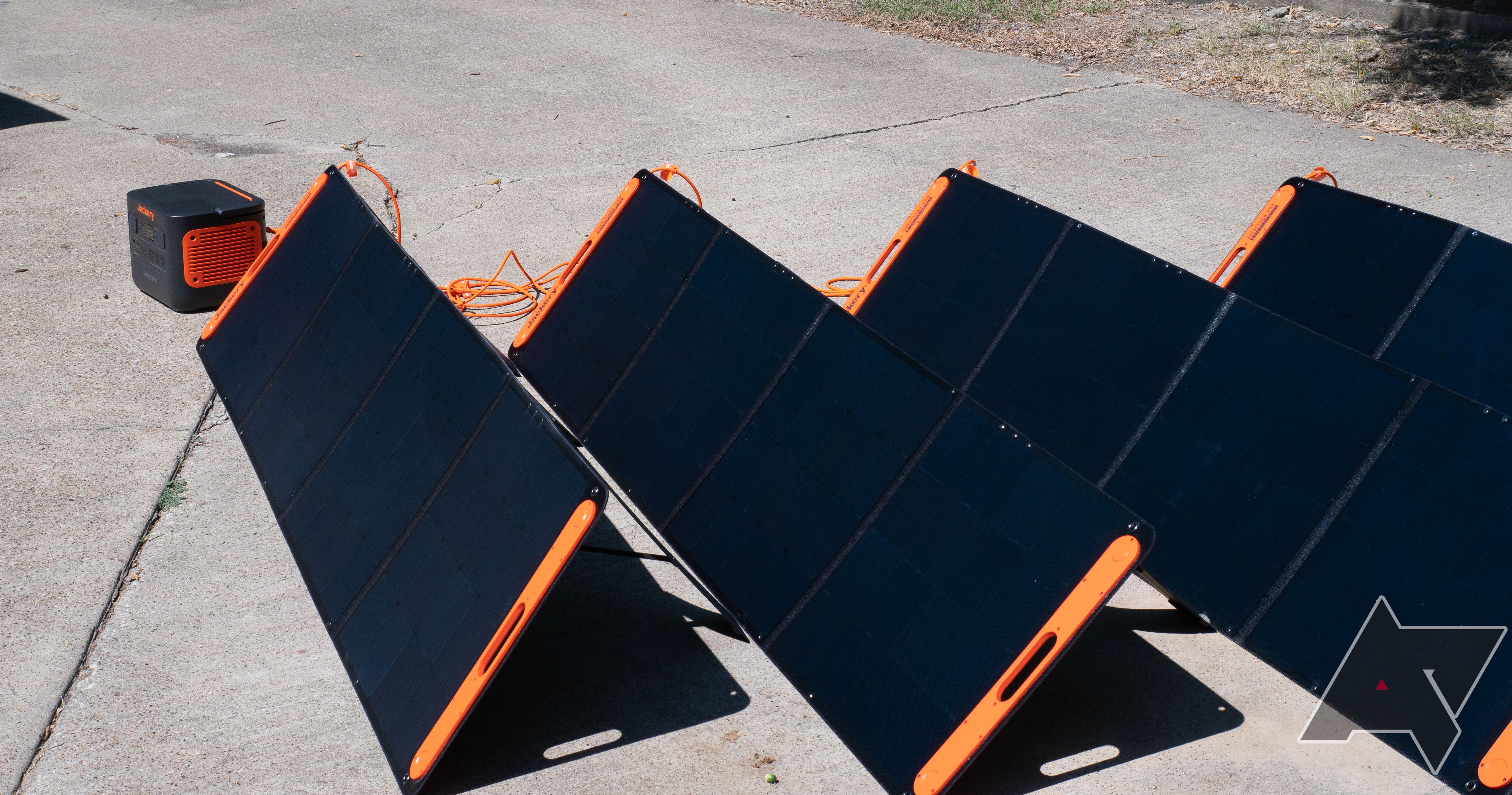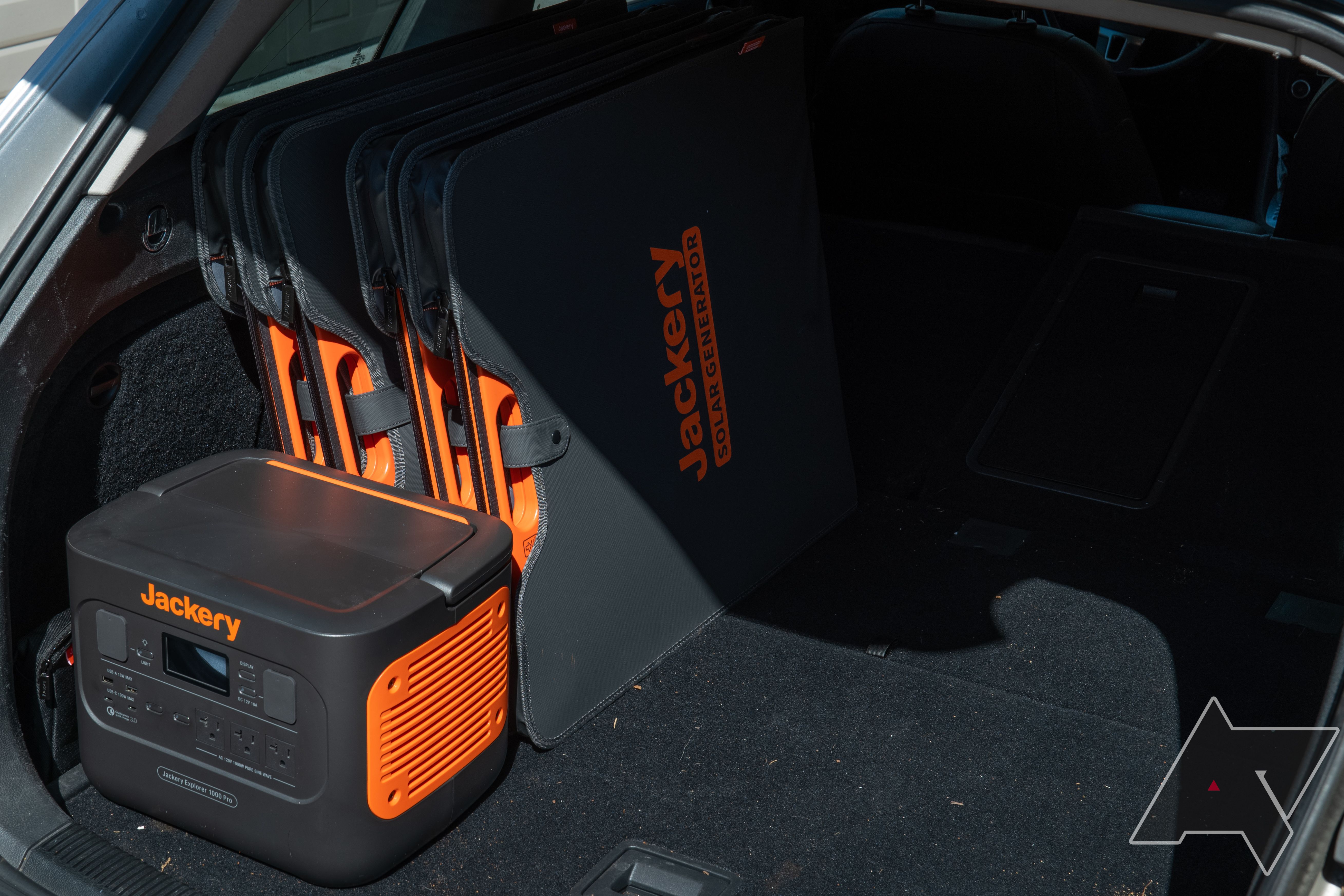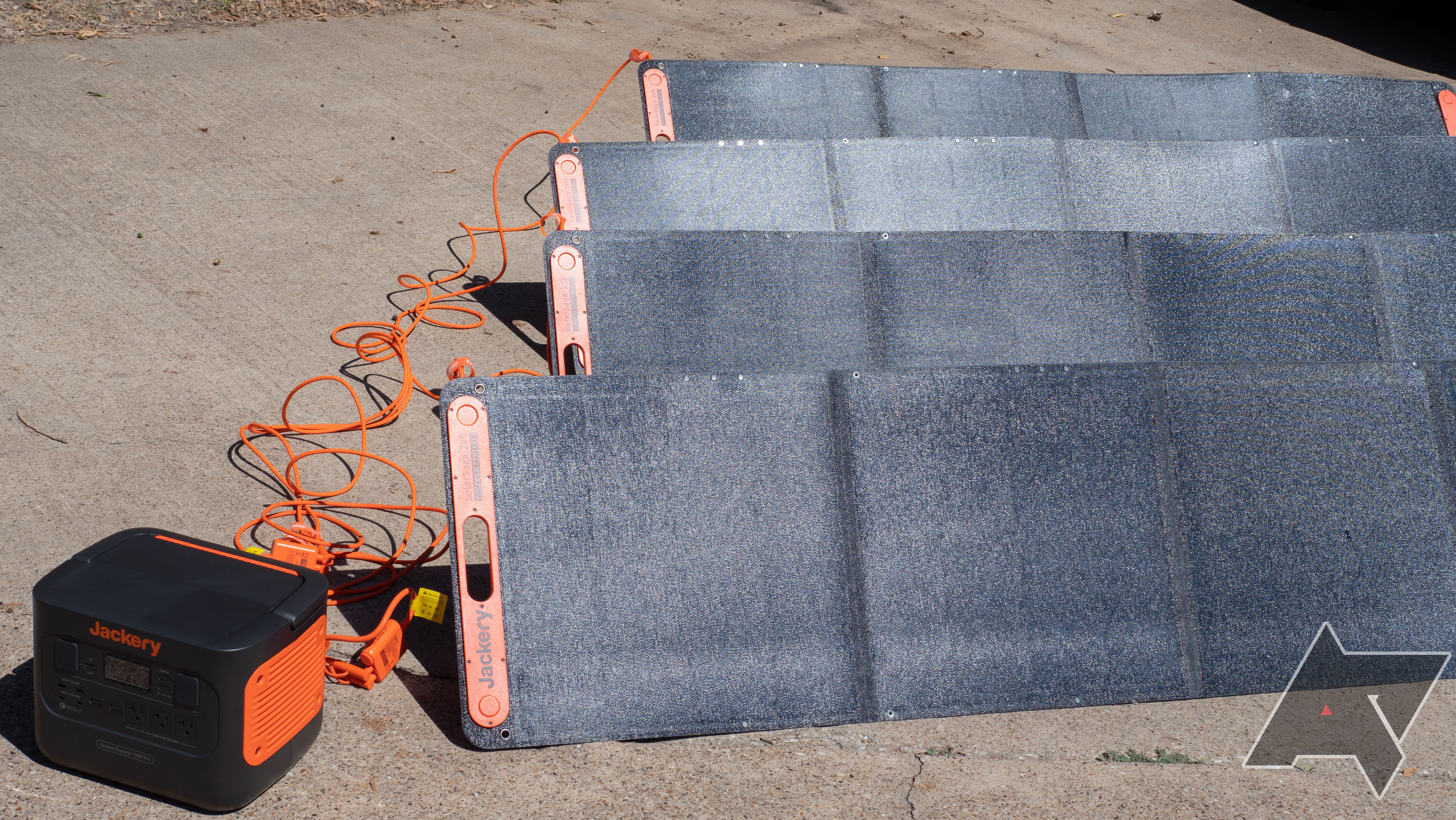Jackery has been the big name in power stations for a while, and is probably the first company that comes to mind when anyone mentions the words. That's even more impressive when battery brands like Duracell and Energizer are in on the competition.
Jackery and its actual competitors dominate the market because of devices featuring fantastic build qualities based on customer needs, and the company pushes battery technology forward rather than merely relying on brand recognition. Jackery has been improving solar charging with more efficient panels and beefier inverters, making solar generators more practical than ever.
The big selling feature of the Jackery Explorer 1000 Pro and the Solar Generator 1000 Pro bundles is the industry-leading speed with which they turn sunlight into usable power. However, since close competitors like Bluetti and Ecoflow have moved on to safer and more resilient LiFePO4 cells and have more affordable power stations with nearly the same power output — or drastically more for the same price — it's starting to look like Jackery is getting too comfortable in its lead while the competition is gearing up to pass. The Jackery Explorer 100 Pro is still one of the best power stations on the market, but it's a tight race.
Jackery Explorer 1000 Pro
The Jackery Explorer 1000 Pro has tight competition from other power stations around the $1,000 price bracket and isn’t the best when it comes to total power output. However, its unrivaled solar charging speed makes it the best solar generator in this price range for most people.
- Weight: 25lbs
- Capacity: 1002Wh
- Maximum Discharge: 1000W continuous AC, 2000W surge
- Input: 1x AC port, 2x DC8020 ports
- Measurements: 13.4" x 10.3" x 10"
- Intput: 800W AC, 800W DC
- Lifecycles: 80% capacity remaining after 1000 power cycles
- Solar Charging: 800W
- AC outputs: 3x NEMA 5-20R style outlets
- USB outputs: 2x 18W USB-A, 2x 100W USB-C
- Protections: pass-through charging, BMS, Over Voltage Protection, Short Circuit Protection
- Other outputs: 1x 12V, 10A car port
- Solar charging is just as fast as wall charging
- The solar panels are IP67 rated
- Two 100W PD Type-C ports
- Only 1000W peak output
- Doesn’t have LiFePO4 cells
- Not a lot of outputs
Price and availability
The power station half of the Solar Generator Pro bundle is the Jackery Explorer 1000 Pro. The list price is $1,100, though it's pretty rare to pay that amount since there are usually coupons on Amazon and the Jackery site, plus the occasional sales event with even steeper discounts.
The two solar panel options for the bundle are a pair of 80W single-segment panels at $1,600 total or the much pricier set with four 200W four-segmented folding panels for a staggering $4,000. As far as bundled savings go, with the 80W panels going for $250 on their own, the 160W solar generator bundle doesn't save you anything upfront. The 200W panels are normally $700 each, and the needed adapters are $70 each, so the bundle is barely better than buying it piecemeal.
Just like with the power station, coupons and sales are commonplace for these bundles, and they typically work on a sliding scale, making the more expensive options a better value. For example, at the time of writing, the Explorer 1000 Pro has a $100 coupon on Amazon or $150 off for the 160W solar generator combo. Amazon coupons for the 800W bundle are much rarer, with none available currently, but coupons and sales on Jackery's site will often take $300 or more off that price.
Design, hardware, what's in the box
The Explorer 1000 Pro has the same dark gray and bright orange color scheme Jackery is well-known for and maintains the company's consistent overall design. Like its previous power stations, the front of the Explorer 1000 Pro is where you'll find the light, ports, and display, though the AC and DC charging ports are all tucked away on the back. As a power-saving measure, each cluster of ports has a button to enable and disable them. The battery also has a wide folding handle with a comfortable, rubberized grip, and at about 25 pounds, it's easy enough to carry one-handed.
The outputs on the Explorer 1000 Pro aren't as numerous as other power stations in this price bracket, like the Ecoflow Delta 2, but they're all quality. The four USB ports are split between two 18W Type-A and two 100W PD Type-C ports. All three AC outlets are grounded three-prong and compatible with 20-amp plugs. The final output is the 12V car outlet, which is helpful for anyone who would rather not replace their existing air pumps and heated blankets. However, anyone not stuck in the past will probably leave the rubber plug in their decorative cigarette lighter outlet.
Rather than opt for the LiFePO4 cells that are becoming more prevalent in power stations, the Explorer 1000 Pro has ternary cells. While that choice allows for higher energy density, the big tradeoff is in much faster cell degradation. With LiFePO4 cells, you should still have 80% of your starting capacity after 3000 full discharge and recharge cycles, but that same wear is expected after just 1000 cycles here. While that difference is significant, you would still need to take the Explorer 1000 Pro from 100% down to zero and back every day for almost three years just to be left with 80% of its capacity, so it's a non-issue for most people.
The Explorer 1000 Pro also includes the three-prong AC and 12V car cables in a fabric carrying case, which is a convenient inclusion. If you get the 800W solar generator set, in addition to the four 200W panels, you'll also get two solar panel connectors to get your four panels into the two DC charging ports. Apart from the charging rate and size disparity, another difference between the 800W and 160W bundles is that only the 200W panels include carrying cases.
Charging and performance
While power stations like Ecoflow Delta 2 and the Anker 757 Powerhouse can charge from your wall at or above 1000W, the Explorer 1000 Pro tops out at 800W. However, things look better for Jackery when you consider solar charging rates, with the Explorer 1000 Pro sporting the same 800W charge rate it gets from a wall, while the Delta 2 maxes out at just 500W. In practice, this means the Explorer 1000 Pro can go from drained to full in about an hour and 45 minutes from the wall — which is a bit longer than from the sun — and over four hours from your car's port.
One of the annoyances with solar is how drastically the charge rate drops when your panels are just a few degrees out of alignment, which will naturally happen as the sun moves across the sky. While it isn't fun to babysit panels, that's necessary if you want to minimize how long you're stuck in one spot charging. Competitor Anker's solar panels have built-in sundials to help get a more optimal angle, and Ecoflow sells add-on sundials for its panels. Unfortunately, Jackery doesn't offer such accessories, so you're stuck hoping you're pointing them in about the right direction.
With just a total output of 1000W with 2000W surge protection shared between the three AC outputs, it feels a little odd for all three outlets to come in the NEMA 5-20R 20A variety. Those plugs aren't exactly common; they are usually reserved for equipment with a continuous draw that exceeds the 2000W surge rating of the Explorer 1000 Pro. Much more sensible are the pairs of 100W Type-C and 18W Type-A ports. You and another person can each charge your phone and laptop without taking turns or topping off any tent fans you forgot to charge before your trip.
Charging your laptop from the road is no issue at all, either. The Explorer 1000 Pro can charge most laptops about seven times between top-ups. A less work-oriented way to use all that power is by powering a PS5 and a TV for about three hours. If your campsite only needs power for lights and fans, in addition to keeping your phone and laptop charged, you'll have no trouble making it through the weekend even without the benefit of solar panels.
How does it fare off-grid?
So long as you aren't dependent on electricity for cooking, the Explorer 1000 Pro is great at a campsite. While there's no shortage of low-wattage coffee makers and similar modern conveniences that are hard to leave behind when you go camping, most hotplates and induction cookers are made with wall power in mind — but the Explorer 1000 Pro falls short of that. Even if you set the heat low, you'll still plow through the 1006Wh in under an hour at full tilt, so a gas stove or the accouterment to cook over a campfire is worth bringing.
Regarding packing, if your power needs are low and space is at a premium, the compactness of the 80W solar panels is a huge advantage over the much larger 200W option. I'm a fan of taking my wagon camping, and the larger panels can make it challenging to get everything to fit, especially if I can't lay my back seats down for whatever reason. With the Explorer 1000 Pro and the larger panels in the back of my car, almost half my cargo space is gone.
Competition
The most compelling competitor to the Explorer 1000 Pro is the Ecoflow Delta 2. Both power stations have just over 1KWh of capacity, with similar prices as standalone units or bundled with solar panels. Neither is strictly better than the other in every way, but I'd give the edge to the Delta 2 for a few reasons. With faster wall charge speeds and higher AC output, the Delta 2 is better and more flexible in the day-to-day. If your use case involves extended time away from an outlet, that edge swings back to Jackery.
Should you buy it?
If camping or #VanLife is important to you, the Solar Generator 1000 Pro bundles are a great one-stop-shop solution. Being able to charge your electronics and power lights without running your car or draining its battery is one of the big steps that makes those situations convenient enough to do on a whim. It also offers peace of mind in the event of a power outage and can seamlessly be used as a UPS for a CPAP machine.
Even though it doesn't have the highest AC output or largest capacity at this price, if you can swing the cost of the solar panels, charging at 800W while using it makes electricity feel less like a finite resource and much more like a wall outlet. If the total capacity or high output are sticking points for you, something from Ecoflow's Delta lineup might be better. With a lineup of add-on batteries, self-aligning solar panels, and even a portable A/C, Ecoflow's is a battery system you can buy into for the same money, but it has a much higher ceiling to expand into over time.
It's easy to recommend Ecoflow if money is no object or if you just want a power station without solar panels; however, Jackery is far enough ahead in solar charging to be the clear choice for people in the middle. With the way it prioritizes solar charging, the longer you plan to spend away from grid power, the better a choice the Explorer 1000 Pro seems to be.

